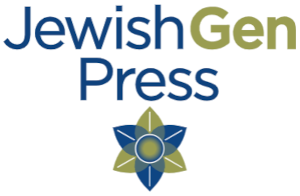

Translation of
Di Kehila Fon Horodlo
(Horodło, Poland)
Published by the JewishGen Press
Editor of Original Yizkor Book:
Available from
for $32.00
Y. Ch. Zawidowitch, Former Residents of Horodlo in Israel
Project Coordinators: Susan and Shawn Dilles
Cover Design: Rachel Kolokoff Hopper
Layout and formatting: Jonathan Wind
Indexing: Laurence Broun
Book Summary: Bruce Drake
8.5”x11” Hardcover, 234 pages with original photographs and illustrations
 |
Details:
Horodlo is a town in eastern Poland situated on the western bank of the Bug River near the border with Ukraine. While small, it was “a world of its own, a Jewish country in miniature” steeped in the traditions of the country's shtetls. Jews had settled there as early as the second half of the 16th century. The community was nearly wiped out in 1648 when Cossack leader Bogdan Chmielnicki led a peasant uprising against Polish rule in which Jews were a target, but it was reestablished in the second half of the 18th century. In 1900, Jews numbered 717.
The book is filled with descriptions of the town's residents, their different classes and occupations. The descriptions in this section were written not only to represent particular persons, but to provide an idea of the entire community as well, ranging from Torah scholars and cheder teachers, to the cart drivers on whom commerce depended, to the carpenter and the ritual slaughterer, to the bathhouse attendant and the synagogue manager and to individuals who stood out for their piety and charity.
A major focus of the book is the rising hostility of Poles towards the Jews in the early 20th century. Relations between Gentiles and the town's Jews had not always bad. But the creation of a new Polish state in 1918 was accompanied by a wave of nationalism saturated with anti-Semitism that was shared by the Poles in Horodlo. At first, this animosity towards Jews was limited in scope; however, it later began to spread to the majority of the town's Poles. Jews felt physically endangered if they walked at night on streets where Poles and Ukrainians lived. With the rise of Hitler, animosity towards Jews escalated and became ever more dangerous.
On September 26th, 1939, Horodlo fell to the Germans who immediately broke into Jewish shops and gave the goods to the Poles. After the Russians briefly took back control of the town, the Germans returned and cemented their grip. The first deportation of Jews from Horodło took place in April 1942 when they were transported to the ghetto in Uchanie. From there, some were sent to an extermination camp while the young and able were put to work in a nearby village of Staszic where they were executed in the fall of 1942.
The book ends with a list of those known to have died at the hands of the Germans.
Horodło [Pol], Horodlo [Yid], Khorodlo [Rus], Gorodlo, Horodle
Horodło, Poland is located at 50°53' N 24°02' E and 161 miles SE of Warszawa.
|
 JewishGen Press
JewishGen Press
 JewishGen Home Page
JewishGen Home Page
Copyright © 1999-2025 by JewishGen, Inc.
Updated 8 Jan 2025 by LA